n8n AI Agent vs Activepieces AI Agent
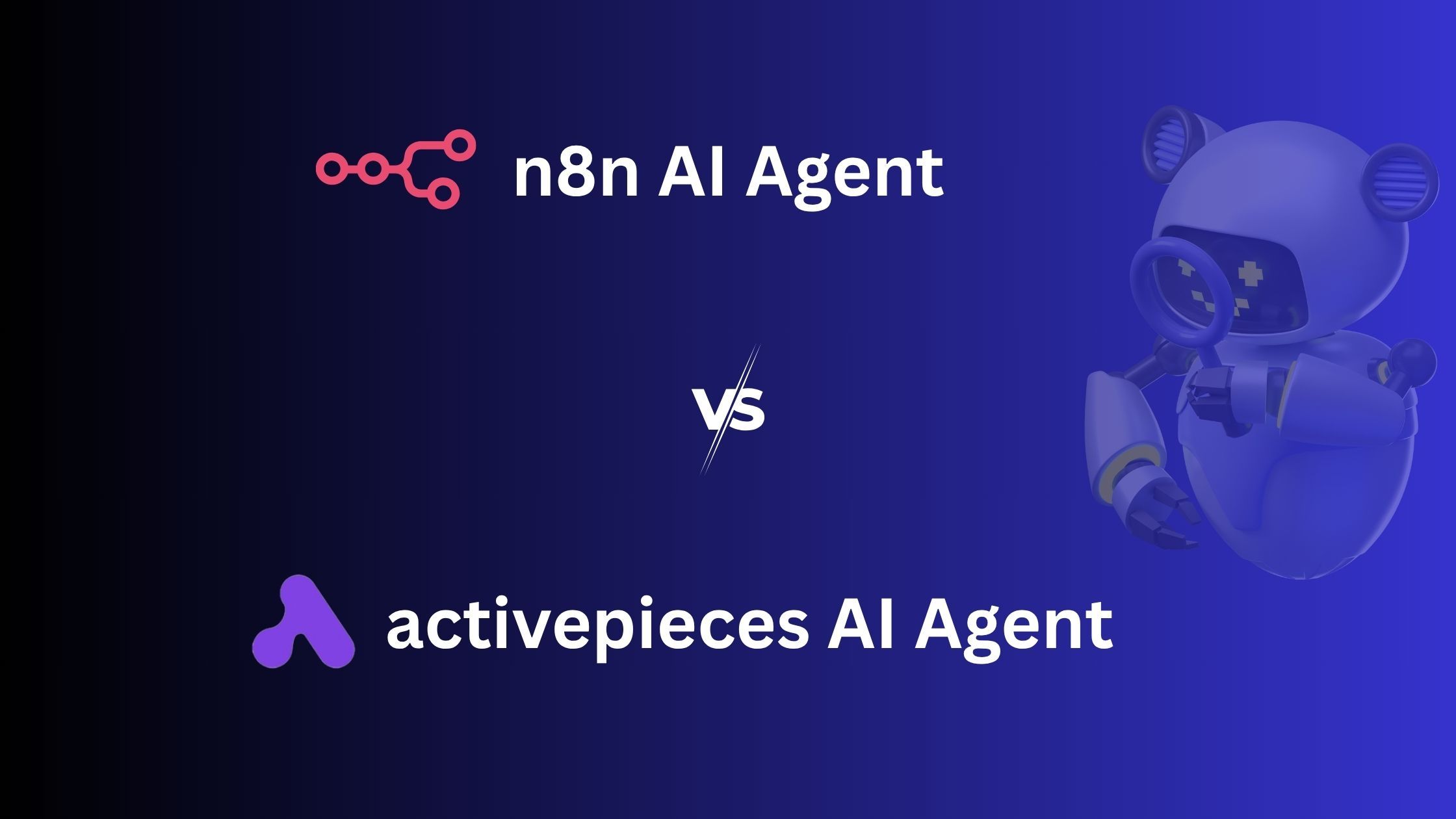
The way AI agents are built, triggered, and reused plays a big role in how teams leverage them. On platforms like n8n, AI agents are embedded as parts of the workflow, and for Activepieces, agents can either be embedded or used as standalone tools.
In this comparison guide, we’re taking a closer look at how n8n AI agent and Activepieces AI agents differ in structure, functionality, and reusability.
If you're looking for a broader comparison between the two platforms, check out our guide: n8n vs Activepieces
How to Build AI Agents in n8n vs Activepieces
In both n8n and Activepieces, how you build and trigger agents varies significantly.
n8n AI Agents
In n8n, every AI agent is embedded directly inside a workflow. Each part of the agent must be constructed step-by-step:
- Add the AI model node
- Configure the prompt using expressions or variables
- Connect it to memory or logic nodes
- Route the result to the next step
There is no built-in interface for testing or running the AI agent in isolation. You can only run it in the context of the full workflow.
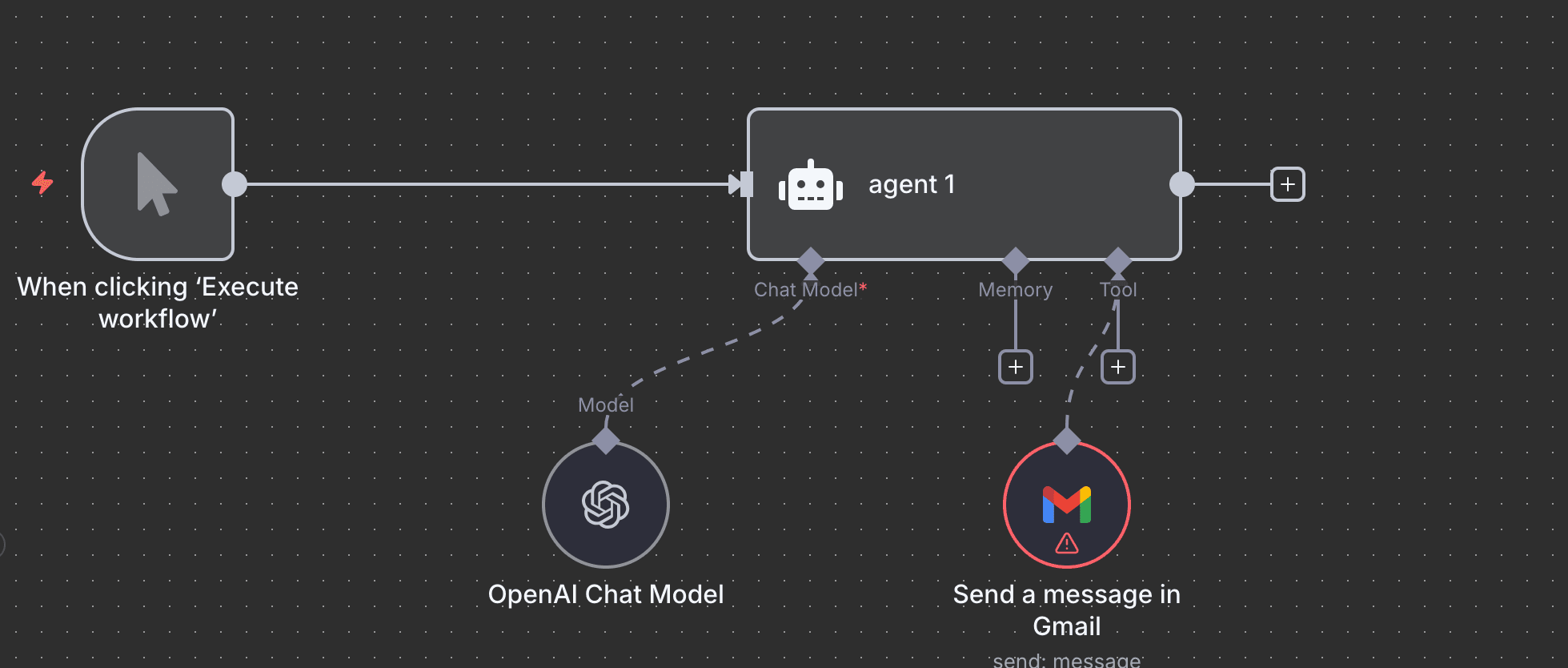
Activepieces AI Agents
Activepieces takes a more flexible approach. You can build an AI agent inside a workflow just like n8n, but you can also create and use standalone AI agents from a dedicated Agents tab.
To build a standalone agent in Activepieces:
- Navigate to the Agents tab
- Click "New Agent"
- Add a description, which generates an editable goal and instructions
- Choose tools (apps, storage, or prebuilt workflows)
- Run the agent directly with live inputs
You get a visual canvas that clearly shows what the agent will do. You can see all inputs, outputs, and even test prompt variations before adding them to a flow.
This standalone capability makes Activepieces ideal for fast experimentation.
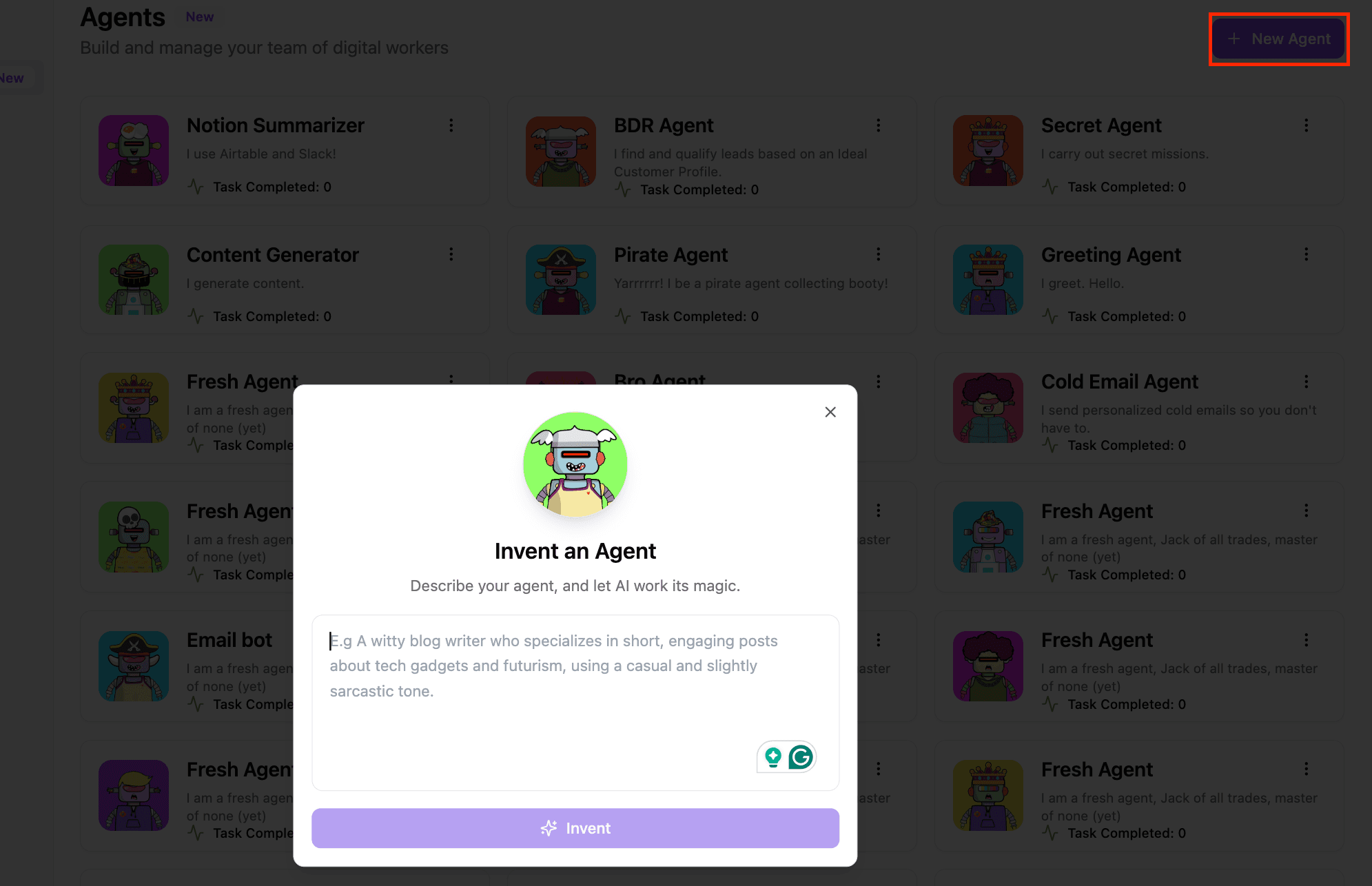
How n8n AI Agents and Activepieces AI Agents Are Scaled and Reused
Once your agent is working, the next challenge is reuse. How do you take the logic you built and apply it across multiple workflows or teams?
AI Agent Reusability in Activepieces
In Activepieces, once an agent is created, it becomes a reusable component. You can drop it into any new automation just like you would a Gmail or Slack piece. That agent can now power multiple workflows without duplicating anything.
Here are the benefits:
- Your agents are organized in one place
- You can make updates in one location
- Changes reflect everywhere the agent is used with that automation environment
This saves time and helps maintain consistency, especially across teams or use cases.
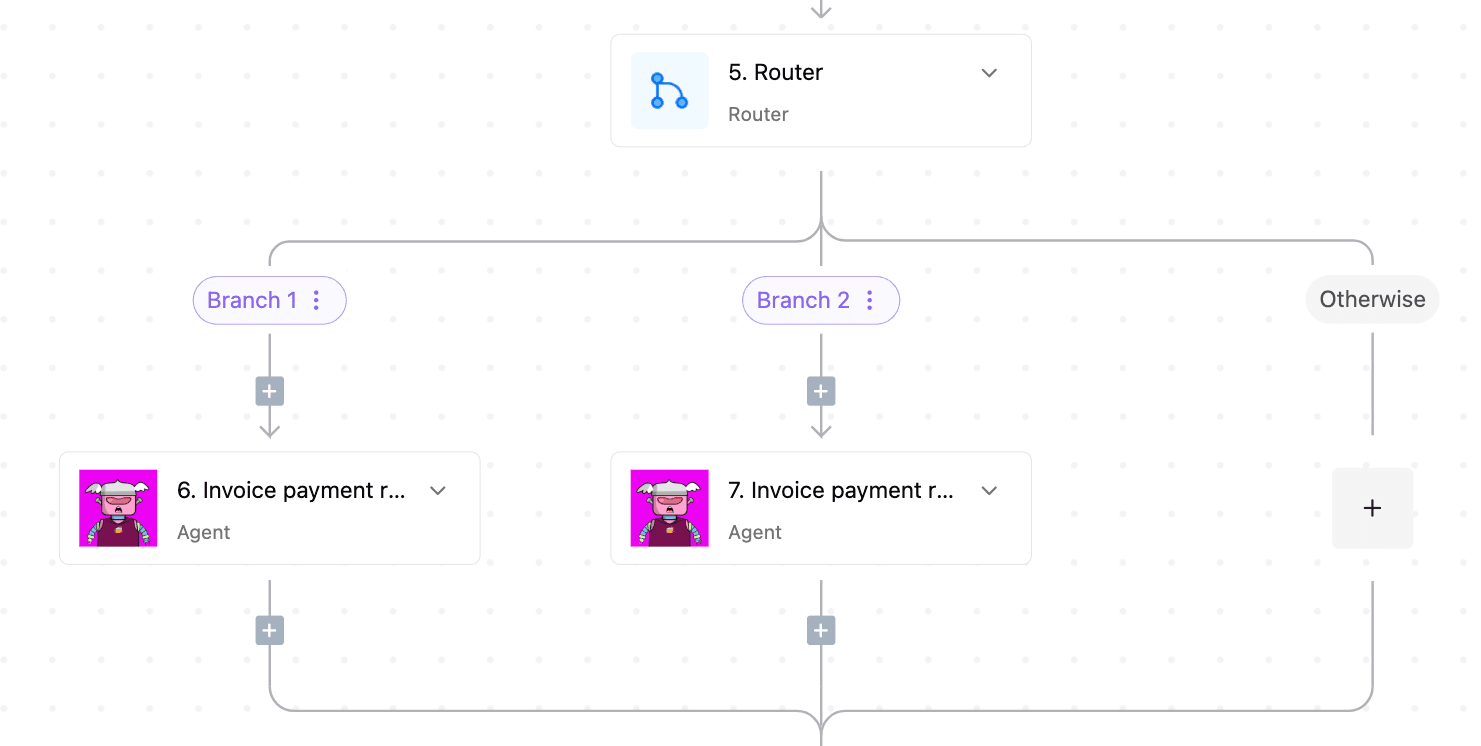
AI Agent Reusability in n8n
In n8n, reuse requires more effort. You have a few options:
- Clone the entire workflow and adjust it
- Turn your logic into a sub-workflow
- Rebuild the agent step by step each time
You cannot simply select an existing AI agent and add it to a new flow. Each instance is isolated. If you change one, the others remain unchanged.
This increases maintenance overhead and makes it harder to manage agent logic at scale.
Over time, these small inefficiencies add up. The difference isn’t just in usability, it’s in how sustainable your AI strategy becomes.
Debugging and Managing AI Agents in Activepieces vs n8n
After building and reusing agents, the final challenge is observability. How easy is it to debug the agent? Can non-developers understand what happened when something breaks?
n8n AI Agents:
n8n provides powerful logs. Each node captures its execution state. But if you want to trace what the AI agent did, you often have to:
- Click into multiple nodes
- Find the right expression output
- Interpret variables like {{$node["OpenAI"].json["choices"][0]["text"]}}
This is great for developers, but overwhelming for less technical users.
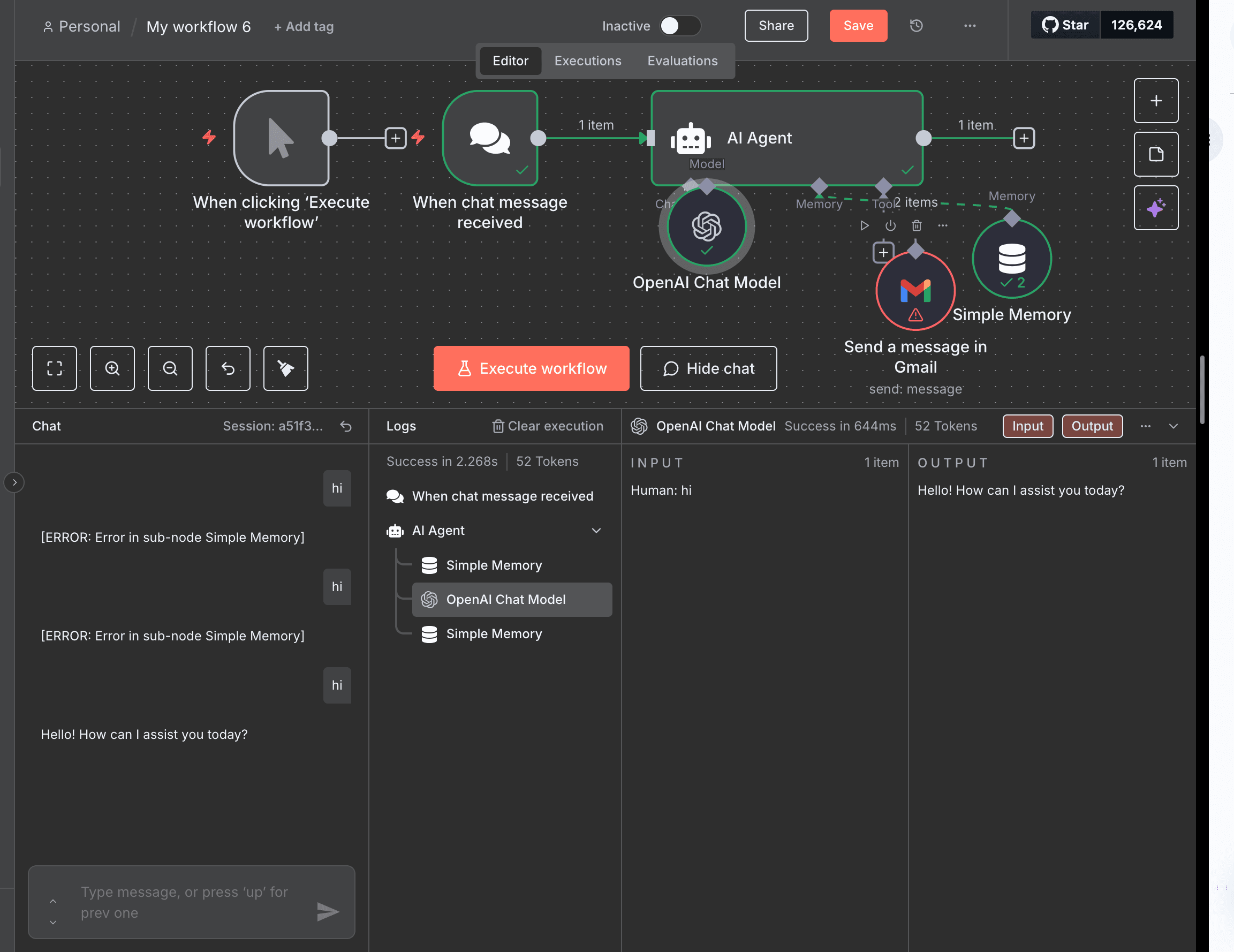
Activepieces AI Agents: Visual Logs, Easy QA
In Activepieces, every AI agent block logs its input and output in plain view. Whether standalone or inside a workflow, you get:
- A scoped run history
- Clearly labeled steps
- Click-to-view outputs
There’s no need to dig through nested arrays or trace back variables. If your AI agent isn't performing, you can instantly see why and make changes.

TL;DR: n8n vs Activepieces AI Agents
| Feature | n8n AI Agents | Activepieces AI Agents |
|---|---|---|
| Architecture | Node-based, workflow-bound | Visual, modular, standalone-capable |
| Prompt Setup | Manual, expression-driven | Guided UI, editable instructions |
| Testing | Full workflow run required | Test from the agent interface |
| Reuse Across Flows | Manual clone or rebuild | Add an existing agent like a piece |
| Debugging | Expression-heavy, nested logs | Click-to-view inputs and outputs |
| Standalone Usage | Not supported | Fully functional from Agents tab |
| Maintenance Overhead | High with multiple instances | Low, centralized logic |
Which AI Agent Design Fits Your Workflow Needs?
Both n8n AI agents and Activepieces AI agents let you build smart, powerful workflows. But how they handle building, testing, and reuse varies greatly.
Choose n8n AI Agents if:
- You are comfortable writing JavaScript expressions
- You don’t need standalone agents
Curious and want to learn more about n8n? Check out this blog: What is n8n?
Choose Activepieces AI Agents if:
- You want to build faster with fewer moving parts
- You prefer a visual, guided UI
- You want to run agents independently and inside flows
- You need reusable agents across multiple workflows
If your team is iterating fast, experimenting with prompts, or deploying agents across departments, Activepieces provides the flexibility and clarity you need.
Start building your first agent with Activepieces here: https://www.activepieces.com/


